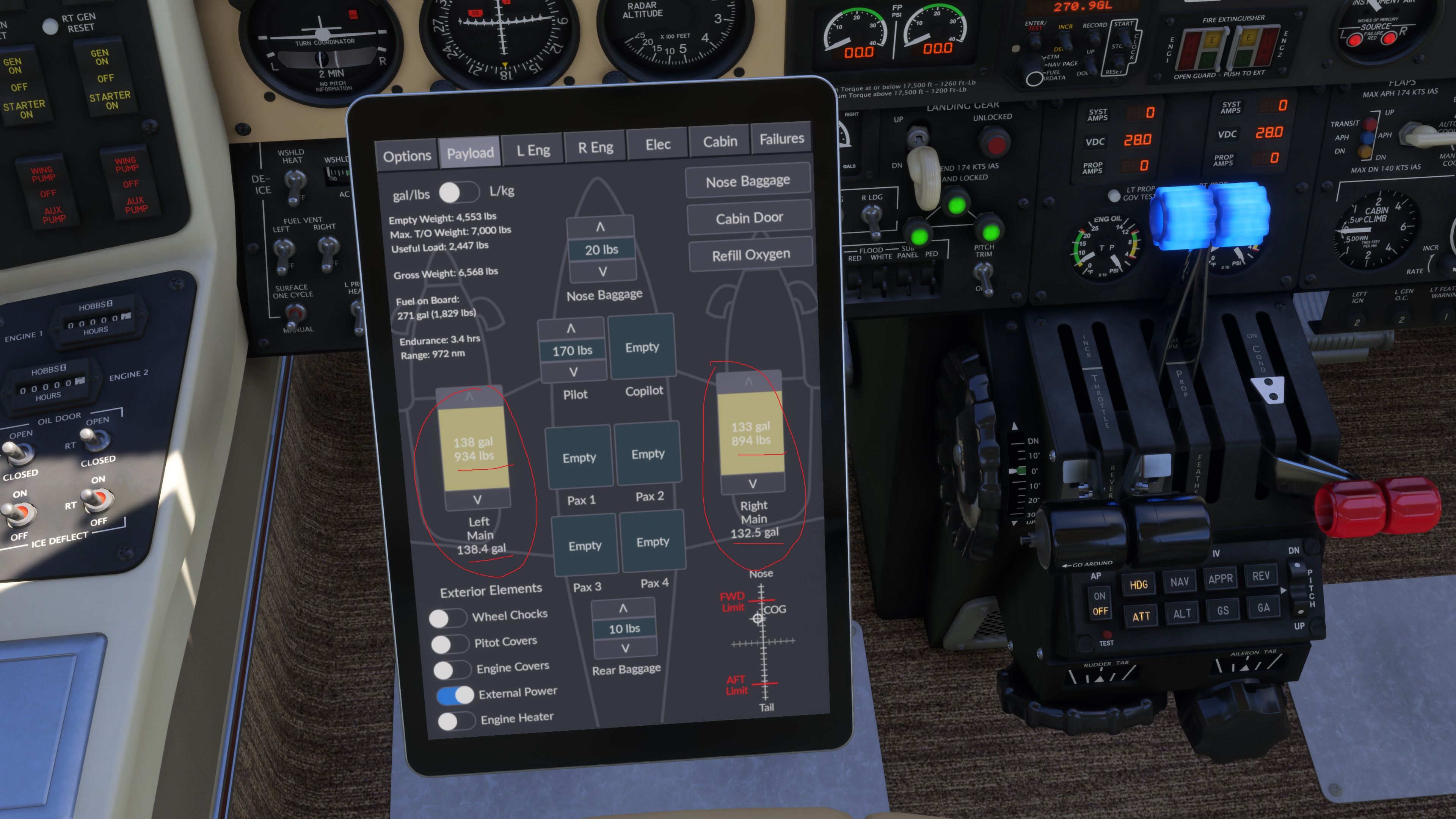Turbine Duke 1.2 MSFS 2024 fuel tank difference
-
Believe it or not, that's reality! The reason is one of those fun details you could only get from an owner, or impressive intuition from the supplement. Since turbine engines weigh much less than reciprocating engines, the aircraft's battery was relocated to underneath the forward baggage compartment, and a second battery added, to restore the proper center of gravity. This leaves an empty compartment in the left engine nacelle, which was filled with an ~6 gallon fuel bladder.
-
Believe it or not, that's reality! The reason is one of those fun details you could only get from an owner, or impressive intuition from the supplement. Since turbine engines weigh much less than reciprocating engines, the aircraft's battery was relocated to underneath the forward baggage compartment, and a second battery added, to restore the proper center of gravity. This leaves an empty compartment in the left engine nacelle, which was filled with an ~6 gallon fuel bladder.
Wow, thx for the response I didn't know this.
-
Believe it or not, that's reality! The reason is one of those fun details you could only get from an owner, or impressive intuition from the supplement. Since turbine engines weigh much less than reciprocating engines, the aircraft's battery was relocated to underneath the forward baggage compartment, and a second battery added, to restore the proper center of gravity. This leaves an empty compartment in the left engine nacelle, which was filled with an ~6 gallon fuel bladder.
@Black-Square Wait, I mean I knew that turbines are significantly lighter than reciprocating engines, but I hadn't ever thought much of the fact that the empty weight on the piston Dukes is lower, and by a few hundred pounds that can't all come from the second battery. Where could all that extra weight come from? I thought other than the engines, second battery and the requisite differences to the HVAC, pressurization systems and panel they were largely identical?

